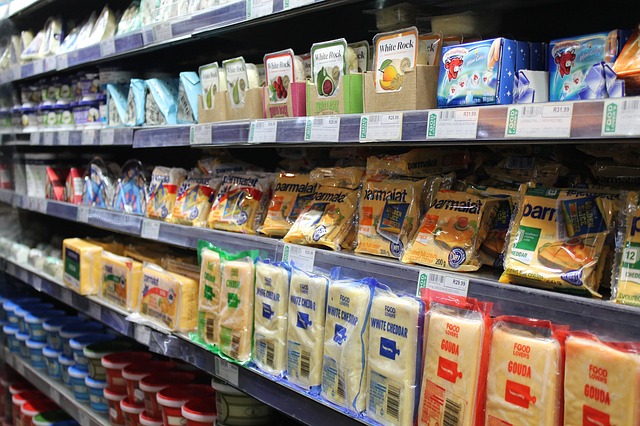We’ve been talking about the quandary Big Food currently finds itself in, facing a smaller-is-better business model that takes its cues directly from consumers — with 65% of them now purchasing “speciality” foods: local, authentic, creative and non-mass-produced products. According to our research, speciality’s share of the market has seen an 11% increase over the last two years.
To meet the changing consumer, a reshuffling of priorities is in order, away from streamlining and forced cost efficiencies, and toward innovation and new products. Bigger companies have been responding to this new reality by doing something fairly sensible — at least, if you’ve got the money — acquiring small, start-up, highly creative food companies. But why not do what the speciality industry does to start? Get to know your consumers and anticipate food trends.
We’ve been researching smaller companies’ success, and it is no accident that they’ve been getting a bigger and bigger piece of the pie: they have their finger on the pulse of consumer needs. They’re small enough to pivot to new trends as they arise and to get new products launched quickly. From our most recent research, here are some of those ‘hot’ product categories and other big trends we’re seeing.
It’s all fresher than ever … even if it’s frozen
We’ve looked at the top-selling food categories in the speciality food world, and it’s worth noting that seven of the top 10 categories, measured by retail sales, are refrigerated or frozen foods. The leaders are cheese and plant-based cheese, which show a 6.6% sales increase from 2015 to 2017; and meat, poultry and seafood, which got a 3.3% bump in the same period.
The three categories that exhibited the strongest growth in sales are fresh or frozen. Frozen desserts were up a whopping 42%, refrigerated entrees were up 27% and yoghurt and kefir jumped to 21%.
Refrigerated, also called fresh foods, have emerged as a clear consumer demand, as well as a category where shoppers are seeking out speciality brands. Nutritional value or nutrient density is important to today’s changing consumer — and they equate those attributes with “fresh.”
We also see that “healthy” has increasingly been linked to plant-based.Speciality foods have leveraged plant ingredients to corner the market in some categories. For example, refrigerated meat-alternatives are now a category where speciality has the highest market share: 97%. Shelf-stable, plant-based milks, such as almond and soy, follow closely with 88% market share, and their refrigerated counterparts have nearly 80% share.
Looking into the future, we forecast that better-for-you, functional and health-forward foods and beverages will stay on the radar for at least thenext five years. We expect fresh items like refrigerated entrees and juices as well as functional beverages to grow 44% and 49%, respectively, as consumers seek the benefits from fresh and convenient foods. So fresh is not a passing fad.
Who is the new food consumer?
Perhaps not surprisingly, the consumers responsible for these shifts tend to be younger, more coastal and increasingly urban. Millennials are the strongest consumers of innovative food and make purchases across the greatest range of categories. However, there are ways to reach a broader segment of consumers — and Big Food companies can tune into it.
While younger consumers tend to buy speciality products for everyday meals, companies can get much more savvy about marketing to them for entertaining or gift-giving. Expand consumers’ thinking by showing ways new foods can be used for parties or to bring to the office to share. Big Food companies can reorient not only their marketing, but their production to monetize these changes. How about a six-pack of carrot juice to take to the game? Party-sized plant-based “sushi” platters? Gift boxed meat-alternative jerky?
Many small food companies have appealed to consumers by telling their story or celebrating the heritage of their brand. While Big Food companies led this charge for decades, the new twist is adding in company values and philosophies, even stories about family members. The consumer has been shown to be nearly as voracious for information on the why products were created as they are for the products themselves. And this stretches into retail, too — consumers like to shop in smaller, independent stores where they know the owner. For Big Food, this means rethinking distribution strategy.
Underlying many of the new, specialized products is a very clear set of values that put the environment first. Though they’ve long led inefficiency, Big Food companies should promote what they do to address food waste, in particular. They should get involved on a community level and educate consumers about ways to be kinder to the planet too. This works especially well when the company has a record of responsible production and local activism.
Overall, the message for Big Food companies is that there are many courses they can pursue to get aligned with the changing times. Most companies are aware of this, but it can be paralyzing to try and guess which direction to take. It’s risky to take a chance on which upcoming trends will “stick” and the way forward is not always clear. But we’re in a time of transformation and doing nothing looks as risky as taking a leap.
Article sourced from https://www.fooddive.com
Click here to learn more about other food trends sweeping the globe.



